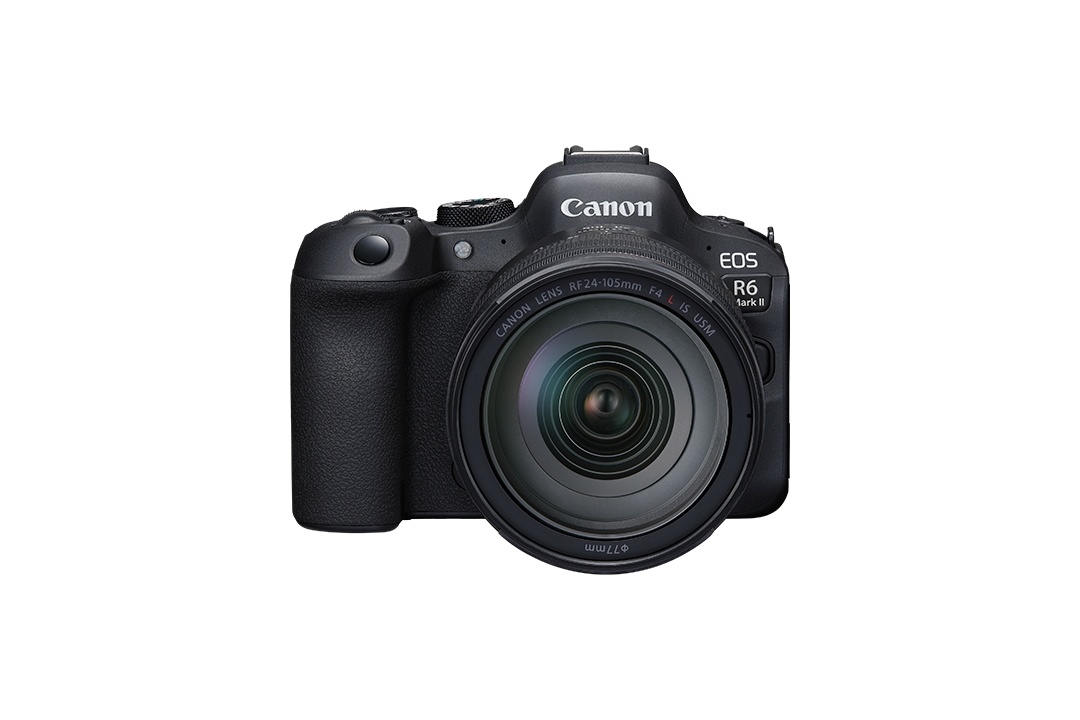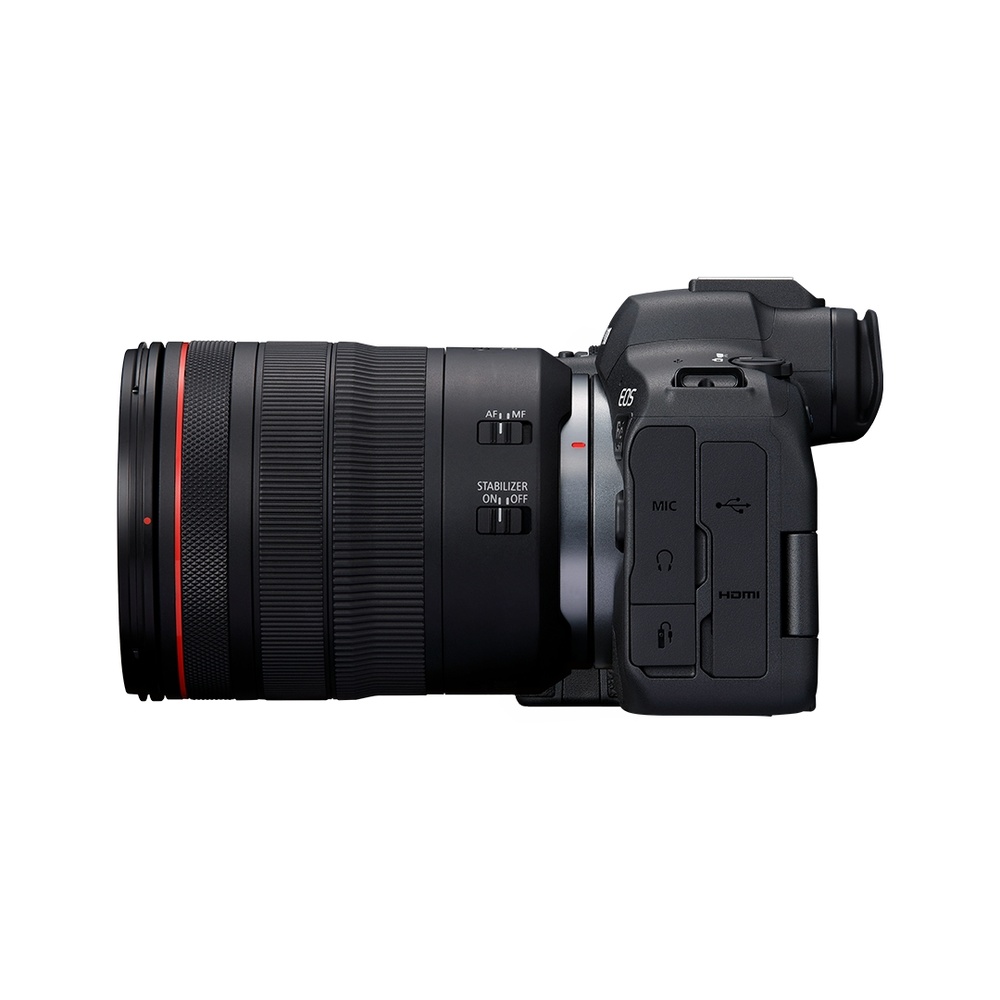We shoot with the Canon EOS R6 Mark II mirrorless camera at a real wedding and a live concert and test the camera that changes the rules when it comes to shooting in low light and at high speed.
So, this review will be a little different from others you might see out there. This camera officially launched on the November 2, 2022, so I’m not going to talk about specifications in detail (Canon does say there are 70 upgrades over the EOS R6, which I love, by the way). The specifications can all be found online here if you’re interested and haven't already seen these somewhere. What I am going to do is give you my experience of using it and tell you how it performed for me, as the main reason for me choosing and staying with a camera brand is as much to do with the feel of it in my hands and how it performs during jobs. The other reason is that as photographers, we can get too lost in the kit and less mindful of the actual job at hand, which is the creation of inspiring images. Some of the best images I’ve ever created were on the Canon 5D Mark II DSLR long after the Canon 5D Mark III DSLR had arrived. The Canon R6 Mark II uses the same size sensor and the same processor, and with so many similarities to the original, how much better can I really expect? Well, let's see.

First off, big thanks to Canon UK, especially Jaime Chan and Frankie Jim, for lending me this kit to review and trusting me with it and the 15-35mm f/2.8 lent to me at the same time.

The Initial Settings I Changed From the Default Settings Are as Follows.
- Image quality from L to raw (This would be set to raw/raw with 2 cards in).
- Lens aberration correction: distortion correction to ON from OFF.
- Shutter Mode to Mechanical from Elec. 1st curtain.
- Release shutter without a card to Off from On.
- Display simulation to Exposure + DOF from Exposure.
- Bracketing sequence to -0+ from 0-+.
- Customize buttons changed M-Fn to AF Point selection.
- Turned on the back button focus by changing the shutter button to Metering start from Metering and AF start.
- * From AEL/FEL to Eye Detection.
- Control Ring to ISO from Exposure compensation.
- I also customized the My Menu tab with Battery Info, Format, and Beep on/off.

Scenario 1
James Williams, X Factor finalist, has his first big concert tonight in Wales's premier music venue, St. David’s Hall. It’s going to be dark with fast-moving subjects and beautiful colors. Let’s see how it performs.

Eye tracking: from the balcony with a Canon EF 70-200mm f/2.8L USM lens (with the Canon Mount Adapter EF-EOS R), it didn’t miss a beat. I pointed it at my main subject, James, and it picked him up straight away. The colors were vibrant and the digital noise was barely noticeable even when shooting at 1/160th second and ISO 2,000 at f/2.8. It was near silent too (even using the mechanical shutter) and completely silent on the electronic shutter. Burst mode for the pyrotechnics caught everything, and I can only suggest that sports photographers are going to love this with the crop modes available and the update to 40 fps on the electronic shutter. I’ve included the unedited images so you can really see the dynamic range coming straight out of the camera.
To say I was pleased is an understatement. This really delivered in a challenging situation where the light was minimal and noise would have been an issue for older camera models. Though I didn’t really push this to its upper limits, what it did show me is just how much I could get away with when using this for concerts and events of a similar ilk. The colors were faithfully recreated, and the sharpness was unbelievable. Having the extra shots from the battery meant I could just keep shooting without changing batteries, with approximately 760 shots against the original Canon R6's ability to shoot just 510. I just didn't look at it the whole time I was there (though I did have a spare with me).




Scenario 2
The wedding of Irene and Alan in Newport. Now, weddings are normally easy events to photograph if you have an idea of what’s coming and plan well ahead. Most of the time, having a few camera bodies is a good idea, as changing lenses is a big no-no when time is of the essence. My go-to lenses for weddings are the Canon EF 100mm f/2.8L Macro IS USM for the ring shot, the Canon RF 24-105mm f/4 L IS USM for candid shots, the Canon EF 16-35mm f/2.8L III USM for the expansive bride and groom shots, and the Canon EF 70-200mm f/2.8L USM for portraits.
The groom's church had inconsistent lighting, and I found myself competing with fluorescent strip lighting and outdoor harsh sunshine, and shooting in raw here was a godsend with the ability to be able to pull back lost detail in highlights and shadows. Being able to choose to see the image with distortion correction on was good too, as I'd normally apply this in Lightroom in post-production.
The speed of shooting means that when this was set to burst mode for the kiss shot, it captured everything. Sometimes, this can be missed if the groom and bride are a peck-on-the-lips type of people!





Pricing
The current price for the Canon EOS R6 Mark II is £2,779 in the UK for the body only, £3,129 for the Canon EOS R6 Mark II with RF 24-105mm f/4-7.1 IS STM lens, or £3,999 for the Canon EOS R6 Mark II with RF 24-105mm f/4 L Lens (which is well worth the extra). B&H has this in the States starting from just $2,499.

My Final Thoughts
What I Liked About This Camera
This is a well-balanced camera. The improvements from the R6 Mark I, though minor, take this from being a good camera to being an absolutely stunning camera. While this doesn't have the massive megapixels of the R5, if you don't need the extra resolution, I'd say this is the perfect camera for most scenarios, such as sports, weddings, and music. Couple this with the Canon BG-R10 Battery grip, and you're set for a long wedding with no battery change. The look and feel of this is great. It's lightweight, has more options than you can shake a stick at, and is designed for lots of different genres. If you have two camera bodies in your bag, this should be one of them.
What I Didn't Like About This Camera
The first thing I noticed is that the power switch has been moved to the right. This, as a photographer and a user of the original R6, irked me a little, as while using this there were several moments I went to switch it on or off and ended up switching the photo/video mode switch on and off. I put this down to me owning the original Canon R6. For new adopters of the Canon R6 Mark II, this won’t be an issue, although why they couldn’t keep a similar form factor to the previous model I guess is down to feedback from photographers and videographers. Other than this, there's not really anything I could pick out that really bothered me.
Purchase
You can purchase the Canon EOS R6 Mark II mirrorless camera here.







Found some of the menus confusing. Could do to simplify them. Photo using the Canon EF 24-105 IS L on manual with auto ISO . cropped from original.
“Release shutter without a card to Off from On.”
Nothing good could come from this decision.
What the author's 'suggestion' is doing is stopping the user from thinking they are taking a photo when a memory card is not in the camera - which I think most people would agree is a good idea. The wording of some of the Canon menu items can get very confusing.
Absolutely right Mike. Take 100 images only to find you've not got a card in there and see if you'd rather have it off.
"Turned on the back button focus by changing the shutter button to Metering start from Metering and AF start."
BBF is such an unnecessary dinosaur DSLR workaround that just doesn't want to die.
It was needed for focus and recompose at a time when we only had 9 AF points.
Can anybody give a good explanation why you would need it today, when you can literally place an AF point on any part of the picture?
I use it all the time. Gives me CAF and SF with one button. Why not simply say it doesn't suit you and leave it at that?
Hmm, I don't know what ISO 2000 will tell us about noise. Would see something beyond 6400 to get an idea. And "Lens aberration correction: distortion correction to ON from OFF." with raw makes no sense but Canon's raw will be no real raw.